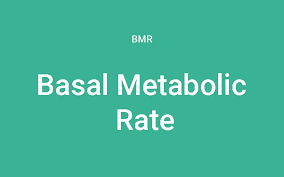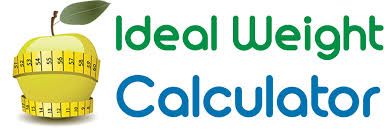Discover the power of the One Rep Max Calculator(1RM max calculator) designed to optimize your fitness journey. Harness your strength potential by determining your ultimate lifting capacity for any specific exercise. Unlock your true potential and tailor your workouts with precision by incorporating this 1RM Calculator to elevate your performance, track your progress, and achieve your fitness goals.
One Rep Max Calculator
| Repetition | % 1RM | Weight |
|---|
[ez-toc]
What is one rep max?
Are you curious about the term “one rep max” that you keep hearing in the gym or across fitness forums? Want to understand its significance and how you can use it to boost your workout routine? Look no further! This comprehensive guide will break down the concept of one rep max (1RM Max), its importance, and how to calculate it to optimize your training.
The one rep max, commonly abbreviated as 1RM Max, is a term used in the fitness world to measure the maximum amount of weight a person can lift for one repetition of a specific exercise. In other words, it’s the most weight you can handle for a single, all-out effort without losing form. This ultimate strength metric is especially important for weightlifters, bodybuilders, and athletes seeking to track their progress and tailor their workouts accordingly.
Why is knowing your maximum lift useful?
Have you ever wondered why knowing your maximum lift is useful for your fitness journey? Gaining insight into your strength capabilities can have a significant impact on your workouts, performance, and overall progress. In this article, we’ll explore the reasons behind the usefulness of knowing your maximum lift and how it can propel you to new heights in your fitness goals.
What is Your Maximum Lift?
Your maximum lift, often referred to as your one rep max (1RM), is the maximum amount of weight you can lift for one repetition of a specific exercise. It serves as an indicator of your ultimate strength and provides valuable insights into your current fitness level.
The Benefits of Knowing Your Maximum Lift
Understanding your maximum lift carries several advantages that can optimize your training and help you achieve your goals:
- Customized Training Plans: Knowing your maximum lift enables you to create personalized workout routines tailored to your strength level. This ensures you’re training effectively and reduces the risk of overtraining or undertraining.
- Goal Setting: When you’re aware of your maximum lift, you can set realistic and achievable goals for strength improvement. This promotes motivation and a sense of accomplishment as you progress on your fitness journey.
- Progressive Overload: Implementing progressive overload – the gradual increase of weight, volume, or intensity in your workouts – is essential for muscle growth and strength gains. By tracking your maximum lift, you can ensure that you’re consistently challenging your muscles and promoting adaptation.
- Performance Measurement: Your maximum lift serves as a benchmark to gauge your progress and improvement over time. Regularly reassessing your 1RM can help you identify areas of strength and weakness, allowing you to adjust your training accordingly.
- Safety and Injury Prevention: Being aware of your maximum lift enables you to train within your limits, reducing the risk of injury. It helps you maintain proper form and technique, preventing potential setbacks in your fitness journey.
How to Determine Your Maximum Lift
While testing your true maximum lift can be effective, it may not be practical or safe for everyone. Instead, you can use estimation methods to calculate your 1RM based on your performance with lighter weights. Two popular formulas include:
- Epley Formula: 1RM = weight × (1 + 0.0333 × reps)
- Lander Formula: 1RM = (100 × weight) / (101.3 – 2.67123 × reps)
These formulas require you to know the maximum weight you can lift for a certain number of repetitions (usually between 3 and 10) before reaching failure. Input those numbers, and the formula will estimate your maximum lift.
Using Your Maximum Lift to Enhance Your Workouts
Once you’ve determined your maximum lift, you can apply it to structure your workouts more effectively. For example:
- Strength Goals: Train at 85-100% of your 1RM for 1-5 reps.
- Hypertrophy (Muscle Growth) Goals: Train at 65-85% of your 1RM for 6-12 reps.
- Muscular Endurance Goals: Train at 40-65% of your 1RM for 12 or more reps.
In conclusion, knowing your maximum lift is an invaluable asset in your fitness journey. By understanding and utilizing this powerful metric, you can optimize your training, set achievable goals, and track your progress. Harness the power of your maximum lift and unlock your full potential in the gym!
Epley formula: How to calculate one-rep max?
Are you looking for a reliable method to estimate your one-rep max (1RM Max) and boost your workout performance? The Epley Formula might be just what you need! In this article, we will delve into the Epley Formula, its origins, and a step-by-step guide to help you calculate your 1RM. Uncover the power of this formula and use it to revolutionize your fitness journey.
What is the Epley Formula? – One Rep Max Formula
The Epley Formula, developed by Boyd Epley, is a widely-used equation designed to estimate an individual’s one-rep max (1RM) for a specific exercise. The 1RM represents the maximum amount of weight a person can lift for one repetition with proper form. By calculating your 1RM using the Epley Formula, you can create tailored workout programs, track your progress, and set realistic fitness goals.
Why Choose the Epley Formula or 1 RM Max Formula?
The Epley Formula is popular among fitness enthusiasts and professionals for several reasons:
- Simplicity: The formula is easy to understand and requires only basic arithmetic to calculate your 1RM.
- Accuracy: While no estimation method is 100% accurate, the Epley Formula has been found to provide reasonably accurate results for most individuals.
- Safety: Estimating your 1RM using the Epley Formula is safer than attempting a true 1RM test, which can lead to injury if performed incorrectly or without proper supervision.
Calculating Your One-Rep Max with the Epley Formula or One Rep Max Formula
Follow these simple steps to estimate your one-rep max using the Epley Formula:
- Choose an exercise: Select the exercise for which you want to determine your 1RM, such as the bench press, squat, or deadlift.
- Perform a warm-up: Complete a thorough warm-up to prepare your muscles and joints for the exercise.
- Determine your working weight: Select a weight that you can lift for multiple repetitions, ideally between 3 and 10. The weight should be challenging but manageable with proper form.
- Perform the set: Complete as many reps as possible with the chosen weight, stopping when you can no longer maintain proper form or when you reach failure.
- Record your results: Note the weight used and the number of repetitions completed.
- Apply the Epley Formula: Use the following equation to calculate your estimated 1RM:
1RM = weight × (1 + 0.0333 × reps)
Plug in the weight and number of reps from your recorded results, and the formula will provide an estimated one-rep max for the chosen exercise.
Utilizing Your One-Rep Max in Your Fitness Routine
Once you have calculated your estimated 1RM using the Epley Formula, you can use it to optimize your workout routine. For example:
- Strength Goals: Train at 85-100% of your 1RM for 1-5 reps.
- Hypertrophy (Muscle Growth) Goals: Train at 65-85% of your 1RM for 6-12 reps.
- Muscular Endurance Goals: Train at 40-65% of your 1RM for 12 or more reps.
What percentage of my one rep max should I lift?
Have you ever wondered what percentage of your one-rep max (1RM) you should be lifting to achieve your fitness goals? Selecting the right intensity is crucial for maximizing your results and ensuring your workouts are both effective and safe. In this article, we’ll explore how to determine the ideal percentage of your 1RM to lift, based on your specific goals, and how it can elevate your fitness journey.
Why Does the Percentage of Your One-Rep Max Matter?
The percentage of your 1RM you choose to lift directly impacts the effectiveness of your workouts and your progress towards your goals. Training at the right intensity helps you:
- Focus on specific fitness objectives, such as strength, muscle growth, or endurance.
- Minimize the risk of injury by avoiding excessive weights or undertraining.
- Optimize your training volume and recovery, ensuring continuous progress.
Determining the Ideal Percentage of Your 1RM Based on Your Goals
To choose the right percentage of your one-rep max, you need to first identify your primary fitness goal. Here’s a breakdown of the ideal 1RM percentages for common objectives:
- Strength Training: If your primary goal is to increase your overall strength, focus on lifting heavier weights for fewer reps. Train at 85-100% of your 1RM for 1-5 repetitions per set.
- Hypertrophy (Muscle Growth): To promote muscle growth, you need to strike a balance between weight and reps. Train at 65-85% of your 1RM for 6-12 repetitions per set.
- Muscular Endurance: If you’re aiming to improve your muscles’ ability to perform repetitive tasks without fatigue, lighter weights and higher reps are the way to go. Train at 40-65% of your 1RM for 12 or more repetitions per set.
Adjusting Your Training Intensity Over Time
As you progress in your fitness journey, it’s essential to adjust the percentage of your 1RM to maintain the effectiveness of your workouts. This involves:
- Reassessing Your 1RM: Periodically reevaluate your one-rep max to ensure your training percentages remain accurate as you gain strength.
- Implementing Progressive Overload: Gradually increase the weight, volume, or intensity of your workouts to continuously challenge your muscles and promote adaptation.
- Listening to Your Body: Pay attention to your body’s signals and adjust your training intensity accordingly. If you’re feeling fatigued or experiencing pain, consider reducing the percentage of your 1RM temporarily to promote recovery.
How to increase one-rep max?
Are you looking to increase your one-rep max (1RM) and reach new heights in your fitness journey? Improving your 1RM, the maximum amount of weight you can lift for one repetition, can unlock your strength potential and boost your overall performance. In this article, we’ll discuss proven strategies to help you increase your one-rep max and elevate your workouts to the next level.
Techniques to Increase Your One-Rep Max
Implement these effective strategies to boost your 1RM Max and maximize your strength gains:
- Focus on Compound Exercises: Prioritize compound exercises, such as squats, deadlifts, and bench presses, that engage multiple muscle groups simultaneously. These exercises provide the greatest potential for strength development and 1RM improvement.
- Perfect Your Form: Proper technique is crucial for maximizing your strength gains and preventing injuries. Invest time in mastering your form for each exercise and seek guidance from a coach or personal trainer if needed.
- Implement Progressive Overload: Gradually increase the weight, volume, or intensity of your workouts to continuously challenge your muscles and stimulate strength growth. This can be achieved by adding more weight, increasing repetitions or sets, or incorporating more challenging variations of an exercise.
- Use Periodization: Structure your training program into cycles, alternating between phases of high intensity, high volume, and recovery. This approach allows for optimal strength gains while minimizing the risk of overtraining and injury.
- Incorporate Assistance Exercises: Include targeted exercises that focus on specific muscle groups or weaknesses to improve your overall strength and 1RM performance. For example, if your bench press 1RM is limited by weak triceps, incorporate tricep-specific exercises to address this weak point.
- Train with Intensity: Push yourself during your workouts by lifting at a high percentage of your 1RM (75-90%) and performing multiple sets of low repetitions (1-5 reps). This high-intensity approach is crucial for maximizing strength gains.
- Prioritize Recovery: Adequate rest and recovery are essential for strength improvement. Ensure you’re getting enough sleep, properly refueling your body with a balanced diet, and incorporating rest days or active recovery sessions into your training routine.
- Build a Solid Foundation: Develop a strong core and focus on overall stability to improve your performance in compound exercises. A strong foundation will allow you to transfer power effectively, leading to increased strength and a higher 1RM.
A Comprehensive Guide to 1RM Max Calculator
Are you looking to maximize your strength potential and optimize your workouts? The 1RM max calculator (one RM calculator) are powerful tools that can help you achieve your fitness goals.
What is the 1RM Max Calculator?
The 1RM max calculator also known as the one-rep maximum calculator, is a tool used to estimate the maximum amount of weight you can lift for one repetition of a specific exercise while maintaining proper form. This metric, known as the one-rep max (1RM Max), is a measure of your ultimate strength and provides a benchmark for assessing your progress, setting goals, and tailoring your workouts.
The Significance of the One RM Calculator
The one RM calculator plays a crucial role in your fitness journey, offering numerous benefits:
- Personalized Training: By determining your 1RM using the one RM calculator, you can create tailored workout routines based on your strength level, optimizing your training and ensuring effective progress.
- Goal Setting: Your 1RM serves as a reference point for setting realistic and achievable strength goals, promoting motivation and consistent improvement.
- Performance Measurement: Tracking your 1RM using the one RM calculator helps you gauge your progress and improvement over time, enabling you to adjust your training accordingly.
How to Use a 1RM Max Calculator
To use a RM max calculator follow these simple steps:
- Choose an exercise: Select the exercise for which you want to determine your 1RM, such as the bench press, squat, or deadlift.
- Perform a warm-up: Complete a thorough warm-up to prepare your muscles and joints for the exercise.
- Determine your working weight: Select a weight that you can lift for multiple repetitions, ideally between 3 and 10. The weight should be challenging but manageable with proper form.
- Perform the set: Complete as many reps as possible with the chosen weight, stopping when you can no longer maintain proper form or when you reach failure.
- Record your results: Note the weight used and the number of repetitions completed.
- Input your data into the 1RM max calculator: Use an online 1RM max calculator or a formula, such as the Epley Formula, to calculate your estimated 1RM for the chosen exercise.
- You will get your One Rep Max with One Rep Max table once you executed above calculator

FAQ on One Rep Max
How accurate are One Rep Max Calculator?
One Rep Max Calculators provide a reasonably accurate estimate of your 1RM, but the accuracy may vary depending on the formula or algorithm used by the calculator. It’s essential to use the same calculator consistently for tracking your progress.
What is a One Rep Max Table?
A One Rep Max Table is a reference chart that provides estimated 1RM values based on the number of repetitions and the weight lifted. It can be a useful tool for quickly determining your 1RM without the need for a calculator.
How can I use a 1RM Max Table?
To use a 1RM Table, locate the number of repetitions you performed during an exercise and the corresponding weight lifted. The table will provide an estimated 1RM value, helping you gauge your strength level.
Are there different One Rep Max Table for different exercises?
Yes, there are One Rep Max Tables specific to various exercises, such as bench press, squat, deadlift, and more. Each table provides estimates based on the unique mechanics of the exercise.
Can I improve my One Rep Max?
Yes, you can improve your 1RM through consistent strength training. Progressive overload, proper form, and a well-structured training program are key factors in increasing your 1RM over time.
What are the benefits of knowing your One Rep Max?
Knowing your 1RM allows you to customize your training program to your current strength level. It helps you set realistic goals, monitor progress, and make adjustments to your workouts for better results. Additionally, it can boost motivation and confidence in your training.
Can beginners use a One Rep Max Calculator or Table?
Yes, beginners can use a One Rep Max Calculator or Table to estimate their 1RM. However, it’s essential for beginners to start with lighter weights and gradually progress to avoid overexertion and reduce the risk of injury.
Are there different formulas for calculating One Rep Max?
Yes, there are various formulas for estimating 1RM, with some being more accurate for specific exercises than others. Common formulas include the Epley, Lombardi, and Brzycki methods, among others.
How often should I test my One Rep Max?
Testing your 1RM is an intense effort, and it’s not necessary to do it frequently. For most people, testing every 6-12 weeks is sufficient to gauge progress. Regular strength training and tracking other performance indicators can also be effective.
Are there online tools or apps for calculating One Rep Max?
Yes, there are many online One Rep Max Calculatorsand mobile apps available that make it convenient to estimate your 1RM. They often provide quick and accurate results, and some even track your progress over time.
Can One Rep Max values vary between individuals of the same age and gender?
Yes, 1RM values can vary significantly between individuals due to factors such as genetics, training history, body composition, and technique. Age and gender can also play a role, but they are not the sole determinants of 1RM.
Is there a recommended warm-up routine before attempting a One Rep Max lift?
Yes, a proper warm-up is crucial before attempting a 1RM lift. It typically involves light cardio, dynamic stretching, and progressive sets with increasing weights to prepare the body and reduce the risk of injury.
Can a person’s One Rep Max change over time?
Yes, a person’s 1RM can change over time with consistent training. It can increase as you get stronger or decrease if you stop training or experience a significant change in lifestyle.
Are there safety precautions to consider when testing One Rep Max?
Yes, safety is paramount when testing your 1RM. Always use proper form, have a spotter when necessary, and be prepared to bail safely if attempting a lift that may be too challenging. Listen to your body, and avoid overexertion.
Should I consult a fitness professional before attempting a One Rep Max test?
Consulting a fitness professional or trainer before attempting a 1RM test, especially if you are new to weightlifting, can provide guidance on proper technique and ensure a safe testing environment. Their expertise can be valuable in avoiding injuries and achieving accurate results.
In conclusion, understanding and utilizing the “1RM max calculator” and “one RM calculator” can revolutionize your fitness journey by providing valuable insights into your strength potential, enabling you to optimize your training and track your progress.





